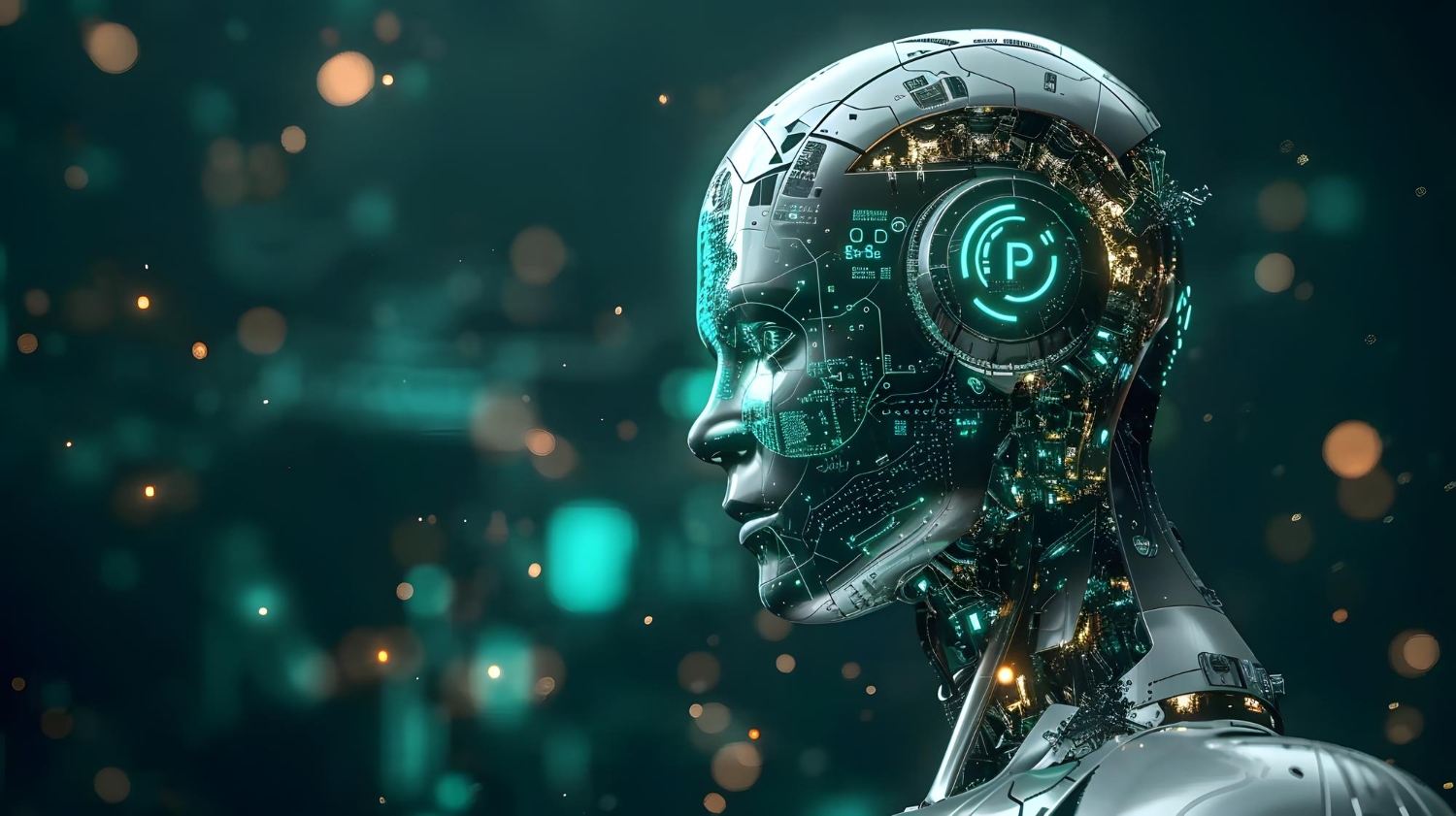How AI Assistants Can Simplify Your Daily Task Management
In today’s fast-paced world, an AI assistant can help you manage daily tasks that can often be overwhelming. From personal errands to professional responsibilities, it’s easy to feel like there aren’t enough hours in the day to accomplish everything on your to-do list. Fortunately, the rise of artificial intelligence (AI) has brought about a new era of productivity, with AI-powered assistants revolutionizing the way we approach our daily tasks. In this comprehensive guide, we’ll explore how AI-powered assistants can help you streamline your workflow, boost your efficiency, and achieve more with less effort. Get ready to discover the power of AI-powered assistants and learn how to integrate them seamlessly into your daily life for smarter task management.
We strongly recommend that you check out our guide on how to take advantage of AI in today’s passive income economy.
Table of Contents
Understanding the Basics of AI Assistants
Before we dive into the practical applications of AI assistants, it’s essential to understand what they are and how they work. An AI-powered assistant is a software program designed to perform tasks and provide assistance based on user input and data analysis. These intelligent assistants utilize natural language processing (NLP) and machine learning algorithms to understand and respond to user queries, making them highly intuitive and user-friendly. AI assistants can be accessed through various devices, such as smartphones, tablets, and smart speakers, making them readily available whenever you need them. As AI technology continues to advance, AI assistants are becoming increasingly sophisticated, offering a wide range of capabilities to help you manage your daily tasks more efficiently.
The Benefits of Incorporating AI Assistants into Your Daily Routine
Integrating an AI-powered assistant into your daily routine can bring numerous benefits to your productivity and overall task management. First and foremost, AI assistants can save you valuable time by automating repetitive tasks and streamlining your workflow.
Whether you need to schedule appointments, set reminders, or send emails, an AI-powered assistant can handle these tasks quickly and accurately, freeing up your time to focus on more important matters. Additionally, AI-powered assistants can help you stay organized by keeping track of your to-do list, prioritizing tasks based on urgency and importance, and providing timely reminders to ensure you never miss a deadline. By leveraging the power of AI, you can significantly reduce mental clutter and minimize the risk of overlooking crucial tasks.
Streamlining Personal Tasks with AI Assistants
One of the most significant advantages of AI-powered assistants is their ability to simplify and streamline your personal tasks. From managing your calendar to organizing your shopping list, an AI-powered assistant can help you stay on top of your daily responsibilities with ease. For example, you can ask your AI-powered assistant to schedule a dentist appointment, set a reminder to pick up dry cleaning, or create a grocery list based on your favorite recipes.
By delegating these tasks to your AI-powered assistant, you can free up mental space and reduce the stress associated with juggling multiple personal commitments. Moreover, AI assistants can provide personalized recommendations and suggestions based on your preferences and past behavior, making it easier to make decisions and save time in your daily life.
Enhancing Professional Productivity with AI Assistants
In addition to personal tasks, AI assistants can also play a crucial role in boosting your professional productivity. Whether you’re a small business owner, a freelancer, or a corporate employee, an AI-powered assistant can help you manage your workload more efficiently. For instance, you can use an AI-powered assistant to schedule meetings, send follow-up emails, or transcribe important notes from a conference call. AI-powered assistants can also assist with research and data analysis, quickly gathering relevant information from multiple sources and presenting it in a concise, easy-to-digest format. By leveraging the capabilities of an AI-powered assistant, you can streamline your work processes, reduce administrative burdens, and focus on high-value tasks that require your expertise and attention.
Overcoming Common Challenges with AI Assistants
While AI-powered assistants offer numerous benefits, integrating them into your daily routine can come with some challenges. One common concern is privacy and data security, as AI assistants often require access to personal information to function effectively. To mitigate this concern, it’s crucial to choose reputable AI-powered assistant providers that prioritize data protection and offer transparent privacy policies. Another challenge is the learning curve associated with using AI assistants, as it may take some time to familiarize yourself with their features and capabilities. However, most AI assistants are designed with user-friendliness in mind, offering intuitive interfaces and natural language interactions to make the learning process as smooth as possible.
Choosing the Right AI Assistant for Your Needs
With the growing popularity of AI assistants, there are numerous options available on the market, each with its own unique features and capabilities. When selecting an AI-powered assistant to help with your daily task management, it’s essential to consider your specific needs and preferences. Some factors to consider include the AI assistant’s compatibility with your existing devices and software, its range of features and integrations, and its overall user experience.
Popular AI-powered assistants like Apple’s Siri, Google Assistant, Amazon’s Alexa, and Microsoft’s Cortana offer a wide range of capabilities and can be accessed through various devices, making them versatile choices for many users. However, there are also specialized AI-powered assistants designed for specific industries or use cases, such as AI-powered virtual assistants for customer service or AI-driven project management tools for teams.
Integrating AI Assistants into Your Existing Workflow
Once you’ve chosen the right AI-powered assistant for your needs, the next step is to integrate it seamlessly into your existing workflow. This process involves setting up your AI-powered assistant, connecting it to relevant accounts and services, and customizing its settings to match your preferences.
Many AI assistants offer pre-built integrations with popular productivity tools like calendars, email clients, and task management apps, making it easy to sync your data and streamline your workflow. Additionally, you can create custom commands and routines to automate specific tasks and save even more time in your daily routine. By taking the time to properly integrate your AI-powered assistant and customize its features, you can maximize its potential and achieve optimal efficiency in your task management.
Best Practices for Maximizing the Potential of AI Assistants
To get the most out of your AI-powered assistant, it’s important to adopt best practices that optimize its performance and ensure a seamless user experience. One key strategy is to be specific and clear when communicating with your AI-powered assistant, using concise and direct language to minimize misinterpretation. Another best practice is to regularly review and update your AI-powered assistant’s settings and integrations to ensure it remains aligned with your evolving needs and preferences.
Additionally, it’s crucial to stay informed about the latest updates and features released by your AI-powered assistant provider, as these can often introduce new capabilities and improvements that can further enhance your productivity. By following these best practices and continuously refining your use of AI-powered assistants, you can unlock their full potential and achieve unparalleled efficiency in your daily task management.
The Future of AI Assistants in Daily Task Management
As AI technology continues to advance at a rapid pace, the future of AI assistants in daily task management looks incredibly promising. In the coming years, we can expect AI assistants to become even more sophisticated, with enhanced natural language processing capabilities, improved contextual understanding, and greater personalization options. Additionally, the integration of AI-powered assistants with other emerging technologies, such as the Internet of Things (IoT) and augmented reality (AR), will open up new possibilities for automating and optimizing daily tasks.
For example, an AI-powered assistant connected to your smart home devices could automatically adjust your thermostat based on your schedule and preferences, while an AR-enabled AI assistant could provide real-time, visual guidance for complex tasks like assembling furniture or navigating a new city. As these advancements unfold, AI assistants will become increasingly indispensable tools for managing our daily lives, helping us achieve unprecedented levels of efficiency and productivity.
Conclusion
In conclusion, AI assistants represent a transformative technology that has the power to revolutionize the way we approach daily task management. By leveraging the capabilities of AI, we can streamline our workflows, automate repetitive tasks, and achieve greater efficiency in both our personal and professional lives. As we’ve explored in this guide, integrating an AI-powered assistant into your daily routine can bring numerous benefits, from saving time and reducing stress to enhancing productivity and enabling better decision-making.
However, to fully realize the potential of AI assistants, it’s crucial to choose the right tool for your needs, integrate it seamlessly into your existing workflow, and adopt best practices that optimize its performance. As AI technology continues to evolve, the future of AI assistants in daily task management looks brighter than ever, with endless possibilities for innovation and transformation. By embracing the power of AI assistants and harnessing their capabilities, you can unlock new levels of efficiency, achieve your goals more effectively, and ultimately lead a more productive and fulfilling life.
Frequently Asked Questions (FAQ)
What does an AI assistant do?
An AI-powered assistant is a software program designed to help users with various tasks and queries using artificial intelligence technology. AI assistants can perform a wide range of functions, such as:
- Answering questions and providing information
- Scheduling appointments and setting reminders
- Sending emails and messages
- Providing recommendations and suggestions
- Controlling smart home devices
- Offering virtual customer support
AI assistants use natural language processing (NLP) and machine learning algorithms to understand and respond to user input, making them highly intuitive and user-friendly.
What is the best AI assistant?
The best AI-powered assistant depends on your specific needs and preferences. Some of the most popular and well-regarded AI assistants include:
- Apple’s Siri: Integrated with iOS devices, Siri offers a wide range of features and capabilities.
- Google Assistant: Available on Android devices and Google Home smart speakers, Google Assistant is known for its accurate information and seamless integration with Google services.
- Amazon’s Alexa: Accessible through Amazon Echo devices, Alexa excels in smart home control and offers a vast library of skills.
- Microsoft’s Cortana: Built into Windows devices, Cortana provides productivity-focused features and integrations with Microsoft Office tools.
Ultimately, the best AI-powered assistant for you will depend on factors such as compatibility with your devices, desired features, and ecosystem preferences.
Can I make an AI assistant?
Yes, it is possible to create your own AI-powered assistant, although it requires technical expertise and resources. To build an AI-powered assistant, you would need to:
- Define the purpose and scope of your assistant
- Gather and preprocess training data
- Choose an appropriate AI framework or platform (e.g., TensorFlow, PyTorch, or IBM Watson)
- Train your AI model using the prepared data
- Integrate your AI model into a user interface or application
- Continuously test, refine, and update your AI-powered assistant
While creating a fully-fledged AI-powered assistant from scratch can be challenging, there are also tools and platforms that allow users to build simple AI chatbots or virtual assistants with less technical knowledge, such as Dialogflow, Botkit, or Rasa.
How to use pi AI on WhatsApp?
To use pi AI on WhatsApp, you’ll need to follow these general steps:
- Install the pi AI app on your device
- Open WhatsApp and go to the chat where you want to use pi AI
- Tap the attachment icon or the “+” button
- Select pi AI from the list of available options
- Grant necessary permissions for pi AI to access your WhatsApp data
- Choose the desired pi AI feature or function from the available options
- Follow the on-screen instructions to complete the setup process
Once you’ve set up pi AI on WhatsApp, you can start using its features, such as automated responses, message scheduling, or chatbot functionality, depending on the specific capabilities of the pi AI app you are using.

We strongly recommend that you check out our guide on how to take advantage of AI in today’s passive income economy.




